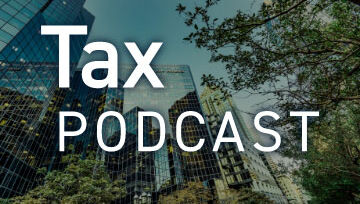Contributors:
David Lundsten | Partner, Government Contractor Services Group
John Ford | Senior Consultant, Government Contractor Services Group
The Contract Disputes Act (“CDA”) requires a contract claim by either party (the government or the contractor) to be submitted within six years after accrual of the claim. This six-year “claims clock” is otherwise known as the CDA Statute of Limitations (“SOL”). The CDA does not state the test for determining when a claim accrues. However, the Federal Acquisition Regulation (“FAR”) has filled this gap at FAR 33.201, which states that a claim accrues when “all events, that fix the alleged liability . . . and permit assertion of the claim, were known or should have been known,” and some injury has occurred.
Of course, the government and the contractor can interpret these words differently, which means that the courts will, over time, refine the definition. Perhaps the most complete refinement has occurred in cases brought before the Armed Services Board of Contract Appeals (“ASBCA”). The ASBCA has stated that the events fixing liability should have been known when they occurred unless they can be reasonably found to have been either concealed or inherently unknowable at that time. It further has explained that the “concealed or inherently unknowable” test is interchangeable with the “knew or should have known” test stated in the FAR and includes a reasonableness component. Therefore, the SOL will not begin to run until the claimant learns or reasonably should have learned of his cause of action and has suffered some harm, whether monetary or otherwise.
It should be apparent that this test of when a claim accrues is a significant issue when we consider contractor proposals to establish final indirect cost rates, sometimes referred to as an incurred cost submission (“ICS”). In light of the Defense Contract Audit Agency’s (“DCAA”) backlog of audits of such proposals, which often approaches or even exceeds six years, establishing the claim accrual date can mean the difference between owing a large amount to the government or not owing anything if the CDA’s six-year clock has run. Consequently, we need to be aware of how the SOL has been applied in regard to these proposals.
To begin with, it must be observed that the test for when the clock begins to run is a fact-specific test and that there is no bright line test for determining when a claim accrues. Therefore, the mere submission of an ICS may not be sufficient to start the clock running. A couple of cases demonstrate this.
Combat Support Associates, ASBCA Nos. 58945, 58946 (Oct. 23, 2014) and Alion Science and Technology Corp., ASBCA No. 58992 (Nov. 10, 2015) both involved government claims against the contractor. Each claim asserted that the contractor had included unallowable costs in its Incurred Cost Submission (“ICS”) and had been billing those costs through billing rates. Therefore, the government asserted that each contractor had been overpaid on its contracts, and that the government was entitled to recover the alleged overpayments. In both cases, the contractor moved for summary judgment alleging that the ICS were submitted more than six years before the contracting officer issued a CDA decision demanding repayment. However, in both cases, DCAA auditors submitted declarations stating that they could not have known of the overpayments merely from the ICS. The auditors asserted that it was not until DCAA received later information concerning the ICS that DCAA could determine that there was an alleged overpayment. Therefore, in both cases, the Board held that there was a genuine issue of fact as to when the government’s claims accrued. In light of this, the Board denied the contractor’s motions and held that this issue would need to be resolved at trial. However, both cases later settled, so no determination was made as to when the SOL began to run.
A very recent decision, Sparton DeLeon Springs, LLC, ASBCA No. 60416 (Dec. 28, 2016) presents an interesting twist on the SOL and ICS because it deals with direct costs that were omitted from Schedule I of Sparton’s ICS.
In this case, the government had awarded Sparton two indefinite delivery/indefinite quantity (“IDIQ”) contracts and issued several cost reimbursement task orders (“TOs”) under each contract. By January 10, 2007, the government had paid interim vouchers that Sparton had submitted regarding the TOs that included breakdowns of certain intra-company “Jackson Engineering Support Costs” (Jackson costs) that Sparton allegedly incurred.
On March 5, 2007, Sparton submitted its ICS for its fiscal year 2006 (“FY 06”); on January 29, 2008, Sparton submitted its ICS for its fiscal year 2007 (“FY 07”). Both proposals included a Schedule I, which is also called a Cumulative Allowable Cost Worksheet. In neither Schedule I did Sparton include the Jackson costs.
The parties eventually executed final indirect cost rate agreements for FY 06 and FY 07. On August 12, 2014, the contracting officer requested Sparton to submit final vouchers and supporting documentation for certain TOs. Sparton submitted the final vouchers, which included the previously invoiced and paid Jackson costs.
On October 26, 2015, the contracting officer issued a final decision demanding that Sparton repay $577,415, and stating:
After reviewing the final voucher submission, I noticed certain costs that were not included in SEFI’s Incurred Cost proposals for CFY 2006 or CFY 2007. These . . . costs were supposedly payments made to your former Jackson, Michigan facility . . . . [Y]our company has not provided information that establishes these additional costs were actually incurred or paid by SEFI . . . .
Because the contracting officer made the claim of overpayment on October 26, 2015, to be timely that claim must not have accrued earlier than October 26, 2009 (six years earlier). Perhaps thinking of these dates, the government contended that it was not put on notice of its overpayment claim until Sparton submitted its final vouchers because the Jackson costs were not included in the Schedule I’s of Sparton’s ISC’s.
The Board rejected this argument and held that the government knew or should have known of the Jackson costs as early as January 10, 2007, by when it paid those costs pursuant to the interim vouchers that included information related to the Jackson costs. The Board also held that the government knew or should have known by January 29, 2008, that Sparton had not included the Jackson costs in its indirect cost rate proposals, because that is the date by when Sparton first submitted the ICS’s, each of which included a Schedule I that did not include the Jackson costs. Consequently, the government’s claim accrued no later than January 29, 2008, when all events that fix the alleged liability of Sparton were known or should have been known by the government.
The government also argued that the interim vouchers included accounting information related to the cost of labor provided by the Jackson facility, but that this information did not contain the basis for the reported labor such as certified time cards. In response to this argument, the Board observed that if the interim vouchers lacked support such as certified time cards, the government knew or should have known that no later than January 10, 2007, by when it paid those interim vouchers.
Finally, the government asserted that when it paid the interim vouchers it had not yet audited them. In response, the Board stated that delay by a contracting party assessing the information available to it does not suspend the accrual of its claim. Once a party is on notice that it has a potential claim, the statute of limitations starts to run. Based on these considerations, the Board held that the government’s claim was untimely.
As these cases demonstrate, the key questions that need to be asked in regard to when the SOL starts to run concerning costs in an ICS are what did the government know and when did it know it? While the actions of DCAA or the Contracting Officer cannot be known in advance or controlled by a contractor, a contractor does control what information it gives to the government and when that information is given. As these cases show, upfront full disclosure is best and should start the six-year clock running for a government claim against a contractor. Of course, if a contractor has a claim against the government, the contractor also must make a claim before the clock stops running.



